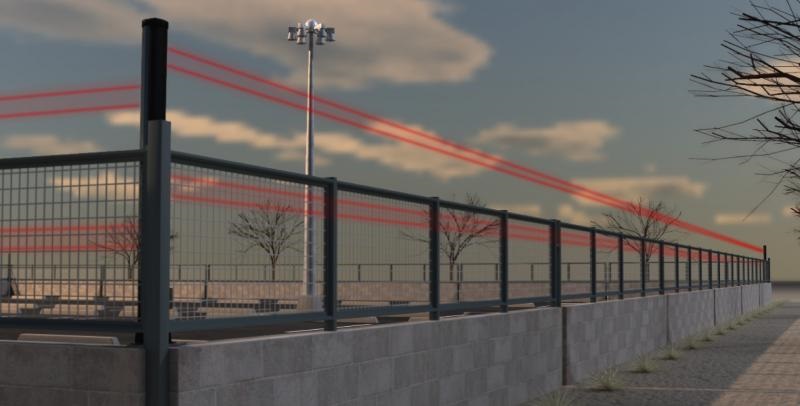Preventing people from accessing your premises if they shouldn’t be there is vital. It starts with making sure your perimeter security is as tight as possible. The best way to achieve that however will vary considerably from site to site.
The range of perimeter management solutions available is vast. At one end of the spectrum are solutions like fences and walls. But these can be enhanced with the addition of perimeter security lighting, and further developed into more comprehensive solutions with the use of technologies such as CCTV systems and heat, motion and contact detection sensors and intrusion detection systems. These systems can initiate various responses, including notifying alarm receiving centres, locking down entry and exit points and triggering CCTV recording and lighting in the area.
Clearly for some sites, walls or fencing might be enough. But for others, that won’t be sufficient, and they’ll need a more robust solution that builds in several “layers” of protection, making sure that all areas of the perimeter are protected one way or another. So what should be taken into account when deciding on the most appropriate way to secure your site’s perimeter?
What is the potential threat level?
Review (and if necessary update) your security risk assessment to identify the types of threats your premises could be exposed to. If someone accesses your site, what could be the potential outcomes and what options do you have to prevent them? To a large extent it’s determined by the nature of your business and type of property. In some cases, fairly simple solutions like bollards, barriers and fences should be sufficient. But if you operate in a highly sensitive industry for example, then that greater risk level will need to be addressed by a more robust level of perimeter protection.
Think about the practicalities
It’s important to come up with a proportionate solution. Once you have a clear assessment of the likely threats, you can begin to clarify the security level that’s required. Assess what you have in place currently to protect your perimeter. Is it still appropriate for current risk levels or do you need to increase the protection? There’s a balance to strike between creating a more robust perimeter solution and the need to avoid disrupting the comings and goings of all the people who have legitimate reason to enter and leave the site on a regular basis.
Be mindful of your immediate neighbours as well: both in terms of how your proposed solution could affect them but also whether their premises creates any additional risks that you must take into account. For instance, if they have storage facilities near your perimeter fence, that could make it easier for an intruder to climb over into your premises.
Consider the visual impact of any potential perimeter security solution too. Check the local regulations to make sure you don’t inadvertently breach any requirements; there might be specific rules relating to the area or the buildings themselves. You will also need to identify any specific environmental conditions that could affect the perimeter solutions you opt for, such as flood risks for example.
How much scope is there for integration?
Cost is inevitably a significant consideration. Installing new networking infrastructure can be expensive so one way to keep costs down is to opt for technologies that can integrate with any security systems already in place. If you have CCTV and access control systems for example, check whether other perimeter security technologies could be installed to provide a comprehensive solution rather than ending up with several stand-alone systems that don’t communicate with each other.
Factor in ongoing maintenance costs
Whatever perimeter solution you end up installing (or upgrading to), don’t forget that it will require maintenance. So make sure that when you’re weighing up the financial viability of options, you don’t only consider the initial outlay but ongoing costs too.
If you are looking for a perimeter security solution for your site and you’d like expert guidance to help you find the most appropriate and cost-effective option, please do get in touch with us.
One complete fire and security solution
Need a local team to help with fire safety and security?
